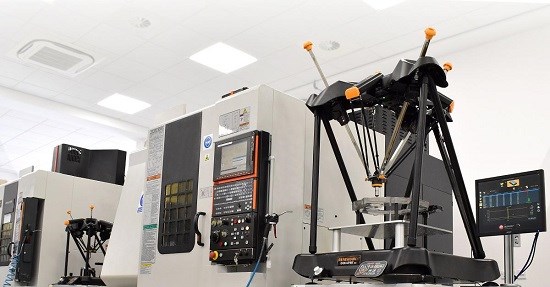
Due to its flexibility and programmability in meeting these challenges, Equator gauges are being deployed in an increasing number of automotive parts manufacturers to inspect stators and EV motor housings plus many other automotive components.

China sets out its goal to achieve a minimum 20% annual growth in deployed industrial robots, along with developing a group of industry champions to double robot density in the world’s most populous country.
China sets out its goal to achieve a minimum 20% annual growth in deployed industrial robots, along with developing a group of industry champions to double robot density in the world’s most populous country.
China has announced new ambitious goals to enhance automation in manufacturing as it strives to become a global leader in bringing robots to the factory floor. Under the five-year plan published jointly by government agencies, including China’s Ministry of Industry and Information Technology, the country sets out its goal to achieve a minimum 20% annual growth in deployed industrial robots, along with developing a group of industry champions to double robot density in the world’s most populous country.

China has become one of the most aggressive countries in replacing human labor with machines, partly to cope with the country’s ageing and shrinking workforce. According to a recent report from the International Federation of Robotics, China last year ranked 9th in robot density (up from 15th in previous year) – measured by the number of robot units per 10,000 employees. China was reported to have 246 industrial robot per 10,000 population while Korea has 932, Japan 390, Germany 371 and USA 255.
“Robot density is the barometer to track the degree of automation adoption in the manufacturing industry around the world,” says Milton Guerry, President of the International Federation of Robotics.
Wang Weiming, a spokesperson from the Ministry of Industry and Information Technology, was quoted in a report from state-owned newspaper, China Daily and said “China aims to double its manufacturing robot density by 2025. High-end, advanced robots are expected to be used in more sectors such as the automobile, aerospace, railway transportation, logistics and mining industries. More efforts will also be made to achieve breakthroughs in core robot components, such as speed reducers, servomotors and control panels, which are recognized as the three basic building blocks of sophisticated automated machines. The goal is that by 2025, the performance and reliability of homegrown key components that can reach the level of advanced foreign products.”
Citing statistics from the National Bureau of Statistics it was noted that the cumulative output of industrial robots in China hit 330,000 units in the first 11 months of 2021, growing 49% year-on-year.
By 2025, more than 70 percent of large-scale Chinese enterprises should be digitalized, and more than 500 demonstration manufacturing facilities will be built nationwide, according to the plan. The plan also vows to strengthen research on key technologies such as artificial intelligence, 5G, big data and edge computing as China drives its manufacturing sector towards intelligent smart manufacturing.
(84) 896 555 247